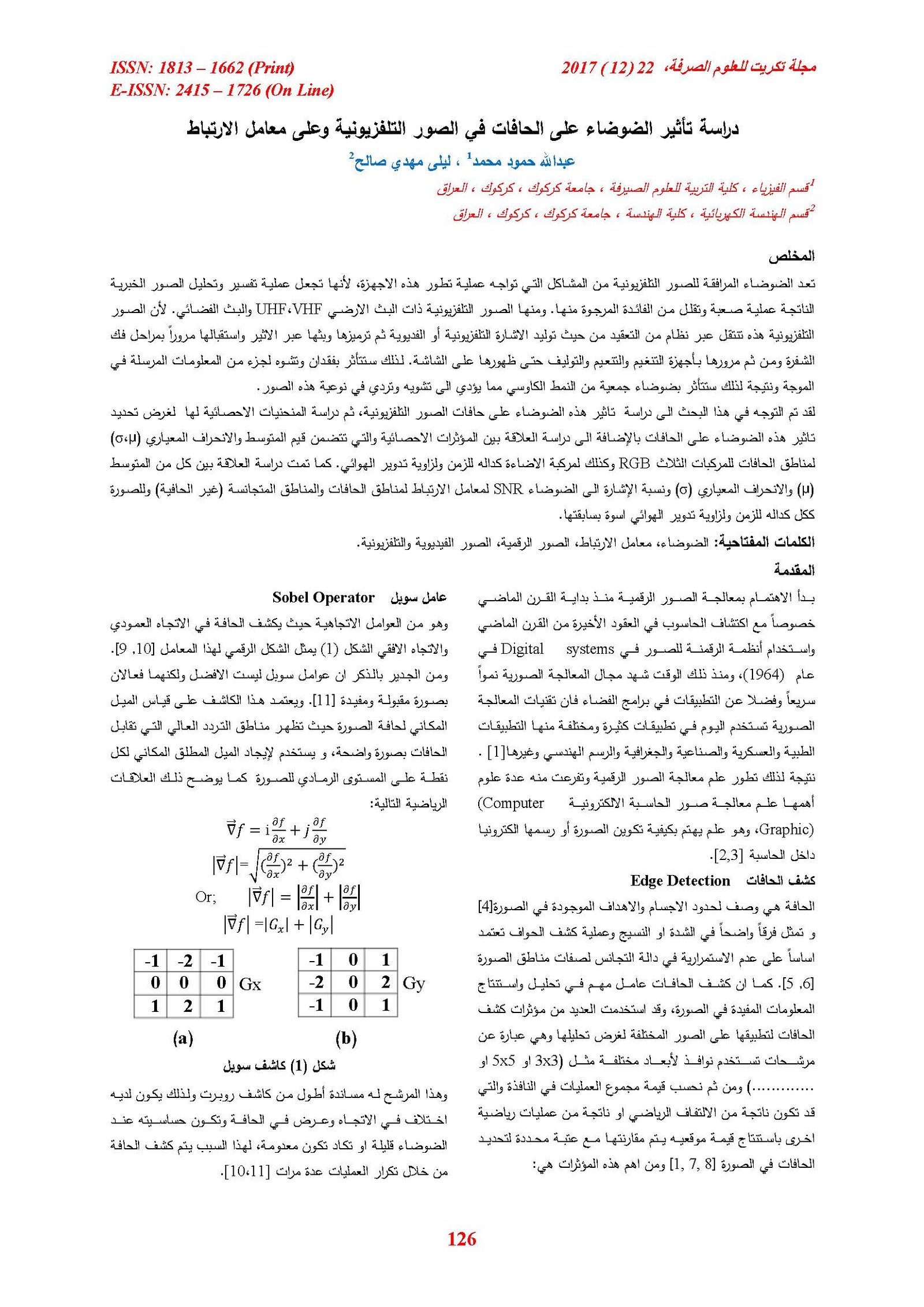Study the noise effect on the edges and cross correlation of TV images
Main Article Content
Abstract
The noise that associated with TV images is considered to be a very important problem that complicates the developments of these systems. Because of that, it makes the interpretation and analysis of informative images a very difficult process, and lessens their advantages. The most common type of these images are TV images transmitted by antenna work with (VHF, UHF) frequency and Satellite Transmission. Because TV images move through a complicated system in generating the TV or video signal, coding them, transmitting them, and receiving them by decoding and passing with different sets until appearing on screen. This will lead to a loose and fraud for a part of the information sent in the wave. As a result, it will be affected by an additive noise (Gaussian noise) which leads to deforming and destroying the quality of these images.
This research aimed at studying the effect of the noise influence of this noise on edge as well as study of the relation between the statistical operators that include the mean and standard deviation (µ, σ) of edge’s regions for the components RGB and illumination component L as a function of time and as a function of antenna rotation.
As well as we studied the relation between (µ, σ) and signal to noise ratio SNR for the cross correlation of edge's regions and for a homogeneous regions as well as for image as a whole once as a function of time and the other as a function of the angle of antenna rotation as in the first.
Article Details

This work is licensed under a Creative Commons Attribution 4.0 International License.
Tikrit Journal of Pure Science is licensed under the Creative Commons Attribution 4.0 International License, which allows users to copy, create extracts, abstracts, and new works from the article, alter and revise the article, and make commercial use of the article (including reuse and/or resale of the article by commercial entities), provided the user gives appropriate credit (with a link to the formal publication through the relevant DOI), provides a link to the license, indicates if changes were made, and the licensor is not represented as endorsing the use made of the work. The authors hold the copyright for their published work on the Tikrit J. Pure Sci. website, while Tikrit J. Pure Sci. is responsible for appreciate citation of their work, which is released under CC-BY-4.0, enabling the unrestricted use, distribution, and reproduction of an article in any medium, provided that the original work is properly cited.
References
1- R.C. Gonzalez, and P. Wintz, "Digital image
processing", Addison-wistey, (1989).
2- Hawrra Hassan Abbas, “Color Image Processing”
M.SC. thesis, physics Dept., The college of
engineering Baghdad, University, (2000).
3- Steven W. Smith, "The scientist engineer's guide
to Digital signal processing” Prentice-Hall, 2004
1997 ISBN 0-9660176-3-3.
4- Charkreyavanich, U., "Edge Detection Operators.
Technical report", No.418, Department Geodetic
Science and Surveying, Ohio state University, pp. 17.
27,1991.
5- Digital Image Processing Documentationhttp://
documents wolfram. com / applications / digital
image/users Guide/7.3.htme.
6- D. Paulus “EDGE IMAGES” CHAPTER 14.pdf,
2001.
7- Zuhair M. Yuosif, “Information Hiding in BMP
Image Files” M.SC. thesis, physics Dept., The collage
of science, Mustansiriyah University, (2001).
8- Wan Tat Chee, “Edge Preserving Image
Compression for Magnetic Resonance Image”,
University of Miami, M.SC. Electrical and Computer
Engineering, August (1993).
10-Haidar Jwaad M. Al-Ta’ay. “Edge detection in IR
image by using digital filter”, M.Sc. thesis, physics
Dept., College of Science, Al-Mustansiriyah Univ.,
2002.
11- M. J. Riedle, “Optical Design Fundamentals For
Infrared Systems”, 2nd ed. SPIE, Bellingham,
Washington, USA, 2001.
